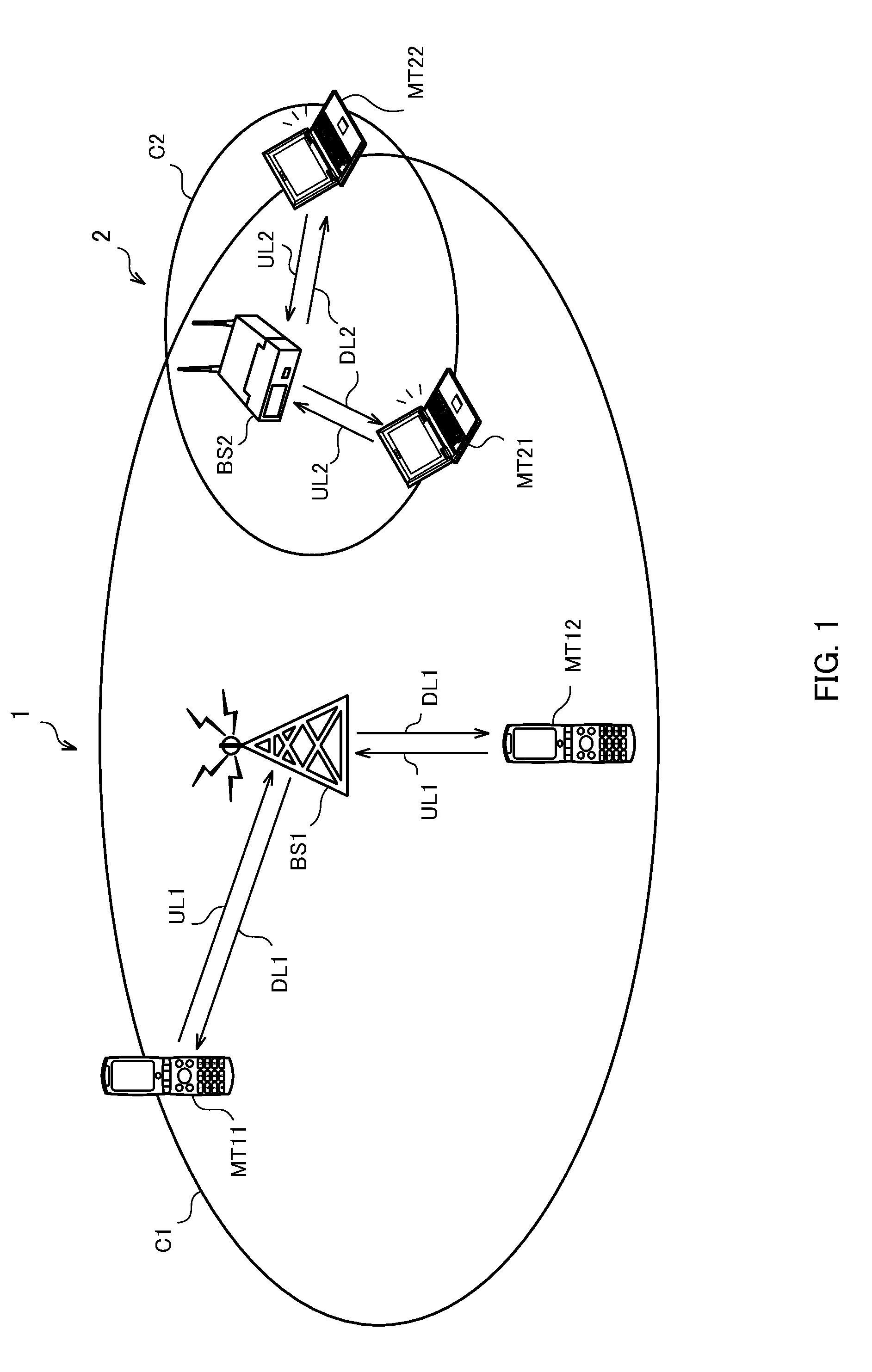Radio station, transmitting station, and frequency band sharing method
a technology of radio station and frequency band, applied in the field of radio station, transmitting station, and frequency band sharing method, can solve the problems of deteriorating signal quality in the priority system, affecting and reducing the transmission opportunity of signals from non-priority systems. , to achieve the effect of preventing the deterioration of signal quality and increasing the transmission opportunity of signals
- Summary
- Abstract
- Description
- Claims
- Application Information
AI Technical Summary
Benefits of technology
Problems solved by technology
Method used
Image
Examples
embodiment 1
[0041]FIG. 1 is a schematic diagram of a radio communication system according to Embodiment 1 of the invention. As shown in FIG. 1, a radio communication system 1 and radio communication system 2 are operated in the same or adjacent areas.
[0042]Further, the radio communication system 1 and radio communication system 2 share the same or adjacent frequency bands. In use of the shared frequency band, the radio communication system 1 has a priority over the radio communication system 2. In other words, the radio communication system 1 is a priority system, and the radio communication system 2 is a non-priority system.
[0043]The radio communication system 1 is comprised of a base station BS1 and mobile stations MT11 and MT12. The base station BS1 receives uplink signals UL1 from the mobile stations MT11 and MT12 existing in a cell C1, while transmitting downlink signals DL1 to the mobile stations MT11 and MT12. The radio communication system 1 is a mobile communication system, for example...
modification 1-1
(Modification 1-1)
[0070]Modification 1-1 in Embodiment 1 describes the case where a shared frequency band is shared between the uplink signal UL1 in the radio communication system 1 and the uplink signal UL2 in the radio communication system 2.
[0071]Referring to FIG. 6, the frequency band sharing processing according to Modification 1-1 will be described, while focusing on the difference from the frequency band sharing processing in above-mentioned Embodiment 1. In Modification 1-1, the mobile station MT2 is provided with the configuration of the base station BS2 as shown in FIG. 2, and the above-mentioned frequency band sharing processing is performed between the base station BS1 (receiving station) in the radio communication system 1 and the mobile station MT2 (transmitting station) in the radio communication system 2.
[0072]More specifically, as shown in FIG. 6, the mobile station MT2 in the radio communication system 2 receives a broadcast signal transmitted from the base station...
modification 1-2
(Modification 1-2)
[0076]Modification 1-2 in Embodiment 1 describes the case where a shared frequency band is shared between the downlink signal DL1 in the radio communication system 1 and the downlink signal DL2 in the radio communication system 2.
[0077]Referring to FIG. 7, the frequency band sharing processing according to Modification 1-2 will be described, while focusing on the difference from the frequency band sharing processing in above-mentioned Embodiment 1. In Modification 1-2, the above-mentioned frequency band sharing processing is performed between the base station BS1 (transmitting station) in the radio communication system 1 and the base station BS2 (transmitting station) in the radio communication system 2.
[0078]More specifically, as shown in FIG. 7, the base station BS1 in the radio communication system 1 collects reception quality information of the downlink signal DL1 from each mobile station MT1. The base station BS1 transmits to the base station BS2 a broadcast s...
PUM
 Login to View More
Login to View More Abstract
Description
Claims
Application Information
 Login to View More
Login to View More - R&D
- Intellectual Property
- Life Sciences
- Materials
- Tech Scout
- Unparalleled Data Quality
- Higher Quality Content
- 60% Fewer Hallucinations
Browse by: Latest US Patents, China's latest patents, Technical Efficacy Thesaurus, Application Domain, Technology Topic, Popular Technical Reports.
© 2025 PatSnap. All rights reserved.Legal|Privacy policy|Modern Slavery Act Transparency Statement|Sitemap|About US| Contact US: help@patsnap.com



